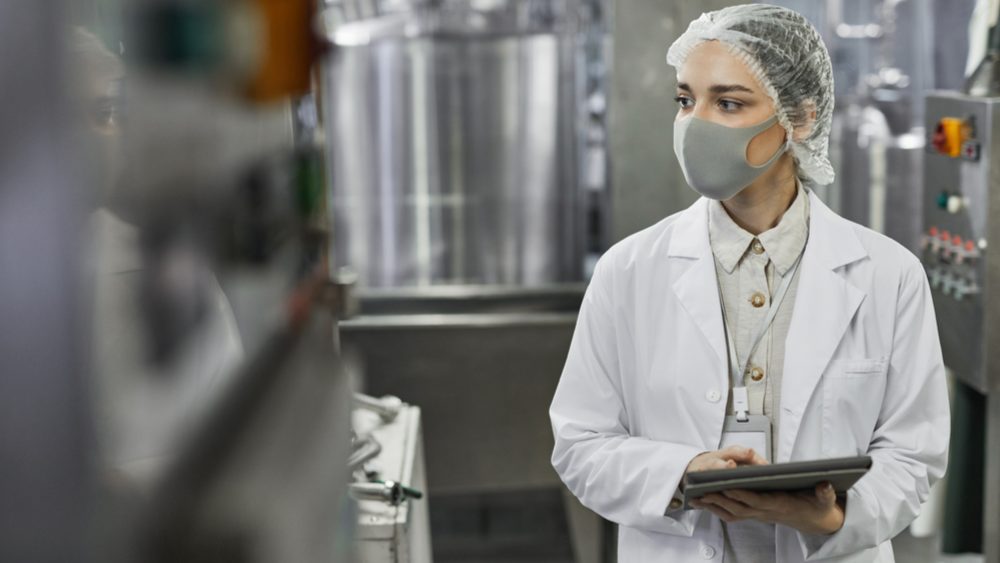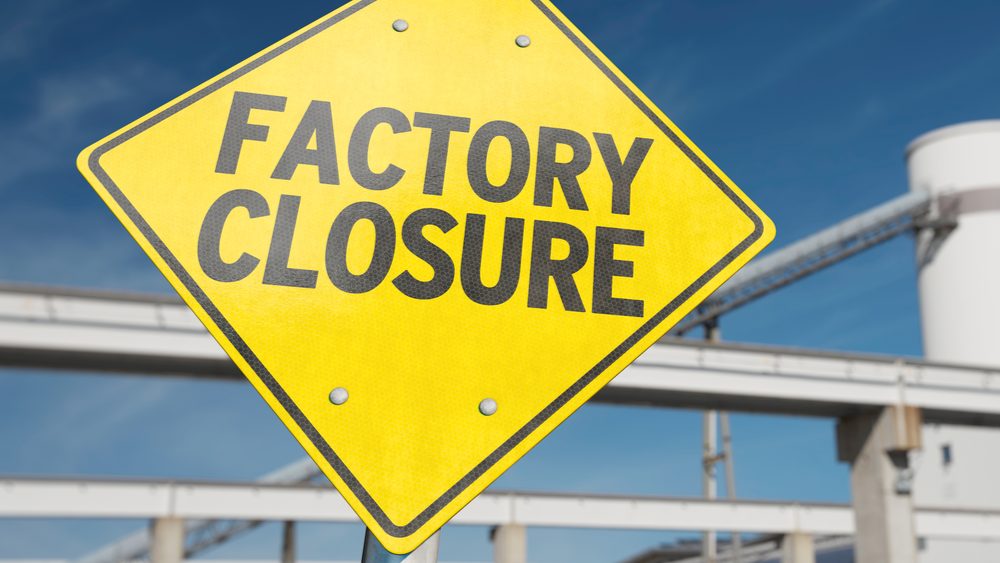Why food contamination is still the biggest threat to your plant
In the food industry, manufacturers and retailers are held to strict standards in hygiene and safety. Contamination – of any kind – threatens your customers, potentially leading to illness or injury. That isn’t to mention the impact on satisfaction rates.
Due to the danger, plants must implement processes that prevent contamination, including effective hygiene and product inspection protocols.

However, as other priorities emerge – especially in the current cost crisis – it’s easy to become complacent. You may think you have taken care of everything with the processes you already have, but it isn’t necessarily the case.
Even the biggest names in manufacturing fall foul of contamination. There is always room for improvement when safeguarding your products – and grievous consequences if you slip up.
Our blog explores the ramifications of contamination to your plant and customers and how to continually reduce the risk.
- Is food contamination still a threat?
- The impacts of contamination
- How to best avoid contamination in your plant
Is food contamination still a threat?
The simple answer is yes. Despite enhanced safety standards and developing technologies, contamination occurs regularly in food processing, even among household names.
Earlier this year, regulators found salmonella in a variety of Kinder products. The issue was later found to have led to more than 300 cases of illness, primarily in children under 10, across 16 countries.
The brand, owned by multinational manufacturer Ferrero, was forced to recall several products, leading to greatly reduced sales over the busy Easter period as customers returned potentially contaminated products or didn’t purchase them at all.
The factory found to be at the source of the contamination was closed for investigation and only re-opened in June. During this time, they could not produce for their other clients, including Hershey and Nestle.

In 2018, Australia was rocked by a similar issue stemming from the physical contamination of strawberry crops. Needles were uncovered in strawberries sold to consumers, with one man having to visit the emergency room after consuming a needle. It led to a widespread investigation while authorities attempted to track down the person responsible.
In 2013, the infamous horse meat scandal sent ripples through the food industry. Many plants involved in the scandal faced costly product recalls and cancelled contracts. There was also customer fury, with the hidden inclusion of horse meat in products going against consumer’s moral, ethical and religious values.
These are just three incredibly well-known cases of physical and microbial contamination, all of which happened in the last decade and received considerable global attention. Their occurrence and the widespread ramifications show that contamination is still an issue that needs to be quashed in every plant.
The impacts of contamination
Contamination in food has dramatic and far-reaching effects.
For your customers, it can result in illness (such as consuming food affected by salmonella or other bacteria) or injury (if chewing or swallowing a physical contaminant, such as metal or bone).
The consequences vary from temporary disruption to their lives to longer-term poor health. It could even lead to death if a contaminant presented a choking hazard or intense illness.
If the consequences are severe enough, your customer has the right to pursue legal action against your company. This is extremely costly, especially if you lose, and will draw negative, reputation-ruining attention to your brand.
It also decreases customer satisfaction, with a more substantial likelihood of complaints. It will worsen your reputation and diminish your sales potential.

Add negative press attention that culminates from a contamination outbreak or customer horror story, and your reputation will be further harmed – perhaps beyond repair.
If your reputation is endangered, you will struggle to secure sales. In some cases, you will lose existing contracts or shrinking demand and, for some, possibly closure.
Beyond the loss of sales and profits, there are further financial implications. The most significant is the likelihood of product recalls. A survey found that 67% of businesses said a recall would cost them more than £30,000, and that is primarily associated with:
- Assembling a crisis team
- Removal of the product from the market
- Investigating and addressing the cause
- Managing PR
American data suggests that a food recall costs a company an average $10 million in direct costs. This is far greater than the costs associated with the prevention of contamination.
A recall will also set your plant back in terms of output as you need to restart production and reprocess products, which requires energy, labour and supplies. It leads to high volumes of waste as your recalled product is thrown away, going against any cost-efficiency or environmental goals you may have in your business.
If contamination is found to have affected your products, you will need to halt production until the cause is identified and resolved. It could be closed for weeks or months, depending on how long investigations take.

During this period, you will most likely be unable to process any product lines, including those under other contracts. It will substantially reduce your productivity and create havoc with your timelines, leaving your plant to play catch up once you re-open (assuming your customers haven’t already turned elsewhere).
How to avoid contamination in your plant
The consequences of contamination are seismic. Food processors need to do everything they can to prevent the issue.
We have put together six tips to help you improve your processes and minimise the danger.
Work with reliable partners
Most plants will work with supplies sourced externally. These supplies are susceptible to contamination before they reach your production line.
Produce grown outside may be affected by dirt, pesticides and insects. Even those coming from other sources could be subject to contamination from human error, transport or broken machinery.
Aim to work with reliable partners you trust to supply high-quality materials. These companies will undergo the correct processes to minimise contamination, enabling you to start production with ingredients that meet your standards. Regular audits of supply facilities will ensure their adherence with the required standards.
Run a clean factory
Another common cause of contamination is lack of hygiene, including physical and microbial contaminants. Stringent hygiene practices are vital to minimise the risk and protect customers.
There are several hygiene steps you should take, such as:
- Conducting routine factory deep-cleans, as per a factory cleaning plan
- Cleaning surfaces and equipment as required, especially between projects
- Encouraging staff to wash hands before handling food and at regular intervals during the day
- Giving your staff PPE to wear, including masks, gloves and hairnets
- Asking staff not to wear jewellery or nail varnish during handling
- Utilising equipment that is easy to clean and hygienic for your product formats
- Washing supplies before use
By having strict hygiene processes, you will help to prevent the spread of bacteria such as salmonella, e-coli or viruses. It will also reduce the risk of physical contaminants, such as hair, jewellery pieces, nails, etc.
Maintenance should be done regularly to prevent machine breakdowns or damage that could result in inspection processes failing or metal contaminants ending up in the line.
Train your staff
Another crucial part of your fight against contamination is ensuring your workforce is on board. If staff are aware of the importance of safeguarding your products, they are far more likely to engage.
Clarify the processes that need to be done to address the threat and why they are needed, including wearing PPE and handwashing. Empowering staff with the resources and knowledge to complete tasks effectively is paramount.
It’s also essential to train them on any equipment they operate, as proper usage will minimise the chance of an issue which results in contamination, such as machine breakages.
By investing your staff into the mission, the chances of a mistake will reduce considerably.
Have adequate quality control processes and systems
The machinery and methods that form your production line must match the needs of your products.
Start by identifying the risk factors that affect your products before and during processing. It enables you to determine the protocol you should have in place to address issues or prevent them from occurring.
Regarding quality control, find a solution specific to your products and requirements. There are many options on the market, including:
- Manual inspection – may be an option for fragile products, though it will only give a very high-level view of contamination
- Checkweighing – allowing you to review the weight of products to determine if they fit your set limits; if a product is too heavy, it could be a sign of contamination
- Metal detection – reviewing products for metal pieces
- X-ray – identifying a wide range of contaminants, including metal, stone, glass, plastics and even some cross-contamination
You may work with one inspection form or take a combined approach. Your chosen method must give you the best possible protection in any scenario.
Investing in systems compatible with your products and their risks will increase your chances of flawless output that meets the highest safety standards.
Incorporate product inspection at the relevant points
Alongside having the right equipment and processes, you need to conduct product inspection at the appropriate points of your production.
Stages where you might choose to incorporate inspection include:
- Pre-production – checks on your raw materials before processing starts
- In line – reviews on the product as it progresses through the line
- Final – the last investigation of your finished product before it goes out to customers, including packaged items
By adding quality control points across your production line, in the areas listed above, you will have more opportunities to identify any contaminants before they reach your customers. You will then resolve it before any damage is done while creating consistently outstanding output.
Constantly review performance
It would be naïve to think the risk of contamination ever disappears. Contaminants will occasionally find their way into your products through human error, invisible bacteria, external sources or the day-to-day operation of your line.
Aim to do everything you can to prevent contamination while seeking to resolve it when it does occur.
There is always room for improvement in your quality control processes, especially as techniques and technologies change. It is recommended to regularly review your practices to scope out areas that can be refined or find hazard points where contamination could sneak through.
If you have a contamination instance, even if you contain it before it leaves the plant, it’s crucial to investigate the cause to prevent it from happening again.
Utilising data collection and auditing across your line will assist with this, giving you the insight you need to make informed decisions.
Conclusion
Contamination poses a significant danger to your customers, reputation and revenue. It is a threat that every food manufacturer wants to avoid.
Protecting your output and maintaining high levels of safety requires constant work. Recent cases show how easily plants can find themselves subject to the issue and the far-reaching consequences – as demonstrated by Kinder’s salmonella outbreak only months ago.
Refining your preventative processes will save your plant money, time and effort in the long run. You will also preserve your reputation, allowing you to focus on generating sales and consistently meeting customer expectations.
If you wish to avoid contamination in your plant, Yamato offers a range of solutions designed to support you.
With checkweighing, metal detection and x-ray systems available to identify issues ahead of time, and hygienic production line equipment and additional support that further lowers the risk, we will help you meet safety standards and protect your customers.

